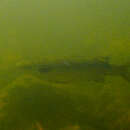Migration
provided by Fishbase
Catadromous. Migrating from freshwater to the sea to spawn, e.g., European eels. Subdivision of diadromous. Migrations should be cyclical and predictable and cover more than 100 km.
Trophic Strategy
provided by Fishbase
Often occurs in small groups in deep pools where stream flow is slow. Mainly herbivorous. Feeds on filamentous green algae, microscopic plants and animals as well as detritus.
- Recorder
- Drina Sta. Iglesia
Biology
provided by Fishbase
Often occur in small groups in deep pools where stream flow is slow. Inhabit deep, gently flowing sections of rivers. Also occur in estuaries and coastal seas during spawning runs. Tolerant of temperatures between 9° and 27°C. Form small shoals (Ref. 44894). Mainly herbivorous. Feed on filamentous green algae, microscopic plants and animals as well as detritus. Also consume benthic invertebrates. Oviparous, eggs are pelagic and non-adhesive (Ref. 205). Spawn in estuaries or at sea following a downstream migration in summer. Peak spawning activity is in February. Sexual maturity is reached after 4 years at a length of about 30 centimeters. Maximum life span is approximately 14 years (Ref. 44894).

